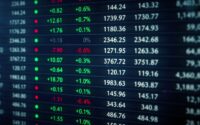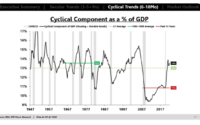Gold Expected to Shine Amid Uncertainty: World Gold Council at BMO Conference
With 2024 expected to be another uncertain year from a macro-economic and geo-political perspective, gold has an opportunity to showcase its value as a stabilizing force in the global economy, the World Gold Council (WGC) said.
To maintain gold’s position as a store of value, the WGC continues to implement reforms to instill greater trust in the gold market, said David Tait, the organization’s CEO, after a meeting held at the BMO Capital Markets 33rd Annual Global Metals, Mining & Critical Minerals Conference. After its Gold247 project launched last year, the WGC is working on ways to digitize gold, allowing it to be traded in a more efficient, transparent and fungible way.
Gold as a stabilizing force
Market participants typically dislike uncertainty. However, between the 64 elections planned in 2024, the ongoing global geopolitical conflicts, and stubbornly high inflation, heightened geopolitical and economic risks are shining a light on gold’s traditional role as a safe haven.
To understand the importance of gold to the global economy, look no further than central banks, which continue to stockpile the yellow metal because of its stabilizing influence on the economy, said Tait. With so much uncertainty, there will be pressure on central banks to increase their gold holdings even more.
Although gold prices reflect some geopolitical risk, Tait believes investors have not priced in the high debt levels and challenges to growth affecting many developed economies.
High inflation in developing economies is another factor that could funnel interest into the precious metal. With some developing economies seeing inflation eroding the value of their currencies, Tait expects others will boost their gold reserves to offset additional risk. “I think they’re incentivized to add more reserves in increasing numbers,” he said.
Tait said that investors are often put off from investing because gold comes in many shapes, sizes, and grades, and it is governed by many confusing regulations compared with other asset classes.
However, Tait believes, “system reforms and surveillance reforms are all things that will instill trust in the market and make more people come and use gold.”
The perception challenges that the WGC is addressing are endemic to the entire mining industry. “Very few people understand that literally everything you’ve got to stand on, sit on, drink from has come from the ground,” said Neal Froneman, CEO of Sibanye-Stillwater and the new Chair of the WGC. “We’re trying to change that perception, which is critical for our industry.”
To advance that goal, the WGC is merging its standards with the Mining Association of Canada, The International Council on Mining and Metals, and the Copper Mark.
The Gold247 project also aims to bring more standards and transparency into the gold market by maintaining a database to help investors assess whether the gold they buy has been responsibly sourced. Tait said he expects the database will take a big step forward this year, with several refiners, logistics companies, world-class financial institutions, and the Royal Canadian Mint all signing on. “I hope that nearly every single participant in this market will see the value,” he noted.
Over time, Tait hopes that the amount of gold that sits outside of the standards established by the Gold274 project will diminish. “My goal,” he said, “has been to try and find a mechanism whereby we reduce the barriers to entry into this asset class, and most of these barriers distill down to trust.”
[ad_2]
Source link


